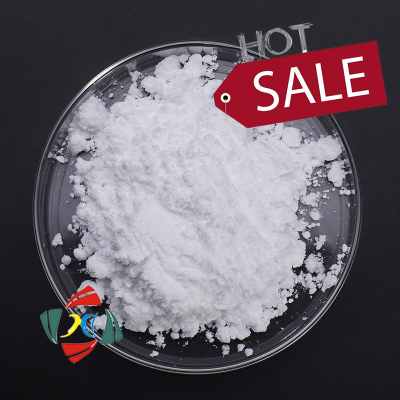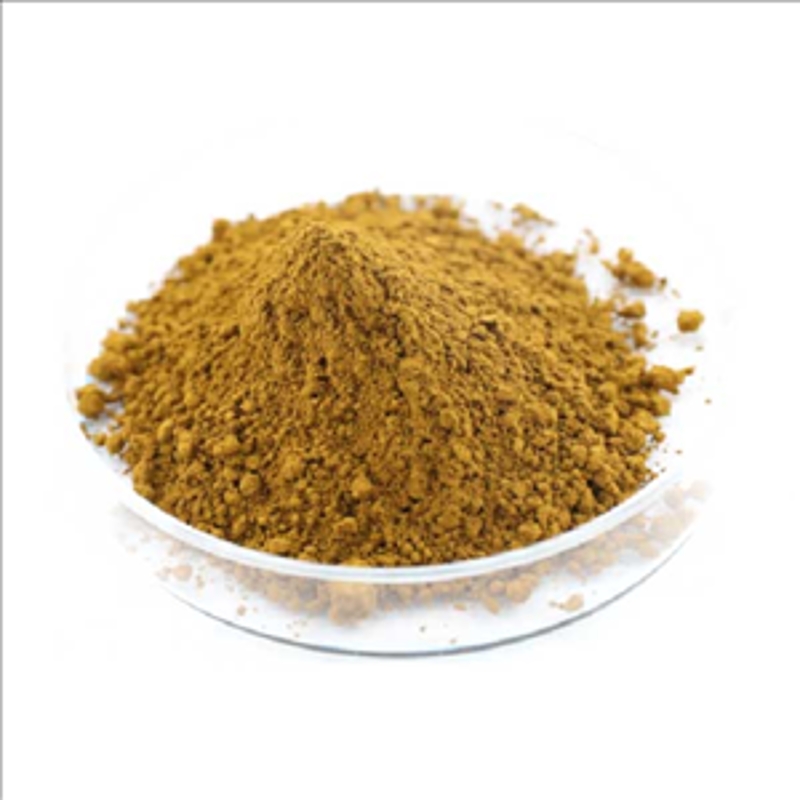-
Categories
-
Pharmaceutical Intermediates
-
Active Pharmaceutical Ingredients
-
Food Additives
- Industrial Coatings
- Agrochemicals
- Dyes and Pigments
- Surfactant
- Flavors and Fragrances
- Chemical Reagents
- Catalyst and Auxiliary
- Natural Products
- Inorganic Chemistry
-
Organic Chemistry
-
Biochemical Engineering
- Analytical Chemistry
- Cosmetic Ingredient
-
Pharmaceutical Intermediates
Promotion
ECHEMI Mall
Wholesale
Weekly Price
Exhibition
News
-
Trade Service
Editor’s note iNature is China’s largest academic official account.
It is jointly created by the doctoral team of Tsinghua University, Harvard University, Chinese Academy of Sciences and other units.
The iNature Talent Official Account is now launched, focusing on talent recruitment, academic progress, scientific research information, and interested parties Long press or scan the QR code below to follow us.
Due to the rapid increase in new cases of iNature, the 2019 Coronavirus Disease (COVID-19) quickly attracted global attention, and the pathogen was identified as SARS-CoV-2.
As of now (May 18, 2021), according to real-time statistics released by Johns Hopkins University, the cumulative number of confirmed cases of new coronary pneumonia worldwide has exceeded 164.
04 million, and the death toll has reached 3.
4 million.
These figures are updated every day and are expected to increase further.
Understanding the neutralization response, especially the NAb response to SARS-CoV-2 RBD, is essential for determining the role of humoral immunity, assessing potential virus clearance, identifying donors for restorative plasma therapy, and evaluating vaccine efficacy.
On May 18, 2021, Hou Fanfan and Hou Jinlin from Southern Medical University published an online publication titled "Dynamics of neutralizing antibody responses to SARS-CoV-2 in patients with COVID-19:" in Signal Transduction and Targeted Therapy (IF=13.
49).
An observational study" research paper, the study recruited 545 COVID-19 patients from Hubei, China, followed them up to 7 months, and confirmed the SARS-related disease through the Alternative Virus Neutralization Test (sVNT).
NAb kinetics of CoV-2.The study found that the sVNT IC50 titer and the neutralization rate measured at a single dilution (1:20) were closely related to the FRNT titer (r = 0.
85 and 0.
84, respectively).
After the onset of symptoms, the median time to NAbs seroconversion was 5.
5 days.
The positive rate of sVNT was 52% in the first week, reached 100% in the third week, and remained above 97% until 6 months after the onset.
Quantitatively speaking, NAb peaked at week 4, and only a quarter of patients had an estimated titer >1000.
The peak level of NAbs is positively correlated with the severity of COVID-19 and age, while it is negatively correlated with serum albumin levels.
In most naturally infected individuals, observations of low to moderate peak neutralizing activity and rapid decay of NAb require caution when evaluating the feasibility of antibody-based therapies and vaccine durability.
The NAbs response is positively correlated with the severity of the disease, warning patients with mild COVID-19 that they may be infected again.
The entry of SARS-CoV-2 into its target cells depends on the binding between the receptor binding domain (RBD) of the viral spike protein and its cellular receptor angiotensin converting enzyme 2 (ACE2).
The protein is highly immunogenic and is the target of many neutralizing antibodies (NAbs).
It has been proven that blood samples during the recovery period obtained from individuals who have recovered from COVID-19 have neutralizing activity, suggesting that humans have the ability to produce antibodies that can effectively neutralize SARS-CoV-2.
Therefore, understanding the neutralization response, especially the NAb response to SARS-CoV-2 RBD, is essential for determining the role of humoral immunity, evaluating potential virus clearance, identifying donors for restorative plasma therapy, and evaluating vaccine efficacy .
However, the understanding of the protective immunity of SARS-CoV-2 is currently limited.
The kinetics of NAb targeting RBD, including its production, longevity, and relevance to the clinical environment, especially at the population level, is little known.
The lack of reliable and universal tests to assess neutralization activity remains a huge challenge.
The conventional virus neutralization test is still the only platform for detecting NAb.
Both tests require live viruses and cells, and it takes several days to obtain results, so they are not suitable for large-scale measurements and population studies.
Recently, an alternative virus neutralization test (sVNT) has been established based on antibody-mediated blocking of the ACE2-spike protein-protein interaction.
Here, the study used the sVNT to evaluate the dynamics of NAbs targeting 545 COVID-19 patients in response to SARS-CoV-2 within 7 months after the onset of symptoms, and explored the correlation with the peak NAbs response Clinical relevance.
The study found that the sVNT IC50 titer and the neutralization rate measured at a single dilution (1:20) were closely related to the FRNT titer (r = 0.
85 and 0.
84, respectively).
After the onset of symptoms, the median time to NAbs seroconversion was 5.
5 days.
The positive rate of sVNT was 52% in the first week, reached 100% in the third week, and remained above 97% until 6 months after the onset.
Quantitatively speaking, NAb peaked at week 4, and only a quarter of patients had an estimated titer >1000.
The peak level of NAbs is positively correlated with the severity of COVID-19 and age, while it is negatively correlated with serum albumin levels.
In most naturally infected individuals, observations of low to moderate peak neutralizing activity and rapid decay of NAb require caution when evaluating the feasibility of antibody-based therapies and vaccine durability.
The NAbs response is positively correlated with the severity of the disease, warning patients with mild COVID-19 that they may be infected again.
Reference message:
It is jointly created by the doctoral team of Tsinghua University, Harvard University, Chinese Academy of Sciences and other units.
The iNature Talent Official Account is now launched, focusing on talent recruitment, academic progress, scientific research information, and interested parties Long press or scan the QR code below to follow us.
Due to the rapid increase in new cases of iNature, the 2019 Coronavirus Disease (COVID-19) quickly attracted global attention, and the pathogen was identified as SARS-CoV-2.
As of now (May 18, 2021), according to real-time statistics released by Johns Hopkins University, the cumulative number of confirmed cases of new coronary pneumonia worldwide has exceeded 164.
04 million, and the death toll has reached 3.
4 million.
These figures are updated every day and are expected to increase further.
Understanding the neutralization response, especially the NAb response to SARS-CoV-2 RBD, is essential for determining the role of humoral immunity, assessing potential virus clearance, identifying donors for restorative plasma therapy, and evaluating vaccine efficacy.
On May 18, 2021, Hou Fanfan and Hou Jinlin from Southern Medical University published an online publication titled "Dynamics of neutralizing antibody responses to SARS-CoV-2 in patients with COVID-19:" in Signal Transduction and Targeted Therapy (IF=13.
49).
An observational study" research paper, the study recruited 545 COVID-19 patients from Hubei, China, followed them up to 7 months, and confirmed the SARS-related disease through the Alternative Virus Neutralization Test (sVNT).
NAb kinetics of CoV-2.The study found that the sVNT IC50 titer and the neutralization rate measured at a single dilution (1:20) were closely related to the FRNT titer (r = 0.
85 and 0.
84, respectively).
After the onset of symptoms, the median time to NAbs seroconversion was 5.
5 days.
The positive rate of sVNT was 52% in the first week, reached 100% in the third week, and remained above 97% until 6 months after the onset.
Quantitatively speaking, NAb peaked at week 4, and only a quarter of patients had an estimated titer >1000.
The peak level of NAbs is positively correlated with the severity of COVID-19 and age, while it is negatively correlated with serum albumin levels.
In most naturally infected individuals, observations of low to moderate peak neutralizing activity and rapid decay of NAb require caution when evaluating the feasibility of antibody-based therapies and vaccine durability.
The NAbs response is positively correlated with the severity of the disease, warning patients with mild COVID-19 that they may be infected again.
The entry of SARS-CoV-2 into its target cells depends on the binding between the receptor binding domain (RBD) of the viral spike protein and its cellular receptor angiotensin converting enzyme 2 (ACE2).
The protein is highly immunogenic and is the target of many neutralizing antibodies (NAbs).
It has been proven that blood samples during the recovery period obtained from individuals who have recovered from COVID-19 have neutralizing activity, suggesting that humans have the ability to produce antibodies that can effectively neutralize SARS-CoV-2.
Therefore, understanding the neutralization response, especially the NAb response to SARS-CoV-2 RBD, is essential for determining the role of humoral immunity, evaluating potential virus clearance, identifying donors for restorative plasma therapy, and evaluating vaccine efficacy .
However, the understanding of the protective immunity of SARS-CoV-2 is currently limited.
The kinetics of NAb targeting RBD, including its production, longevity, and relevance to the clinical environment, especially at the population level, is little known.
The lack of reliable and universal tests to assess neutralization activity remains a huge challenge.
The conventional virus neutralization test is still the only platform for detecting NAb.
Both tests require live viruses and cells, and it takes several days to obtain results, so they are not suitable for large-scale measurements and population studies.
Recently, an alternative virus neutralization test (sVNT) has been established based on antibody-mediated blocking of the ACE2-spike protein-protein interaction.
Here, the study used the sVNT to evaluate the dynamics of NAbs targeting 545 COVID-19 patients in response to SARS-CoV-2 within 7 months after the onset of symptoms, and explored the correlation with the peak NAbs response Clinical relevance.
The study found that the sVNT IC50 titer and the neutralization rate measured at a single dilution (1:20) were closely related to the FRNT titer (r = 0.
85 and 0.
84, respectively).
After the onset of symptoms, the median time to NAbs seroconversion was 5.
5 days.
The positive rate of sVNT was 52% in the first week, reached 100% in the third week, and remained above 97% until 6 months after the onset.
Quantitatively speaking, NAb peaked at week 4, and only a quarter of patients had an estimated titer >1000.
The peak level of NAbs is positively correlated with the severity of COVID-19 and age, while it is negatively correlated with serum albumin levels.
In most naturally infected individuals, observations of low to moderate peak neutralizing activity and rapid decay of NAb require caution when evaluating the feasibility of antibody-based therapies and vaccine durability.
The NAbs response is positively correlated with the severity of the disease, warning patients with mild COVID-19 that they may be infected again.
Reference message:







